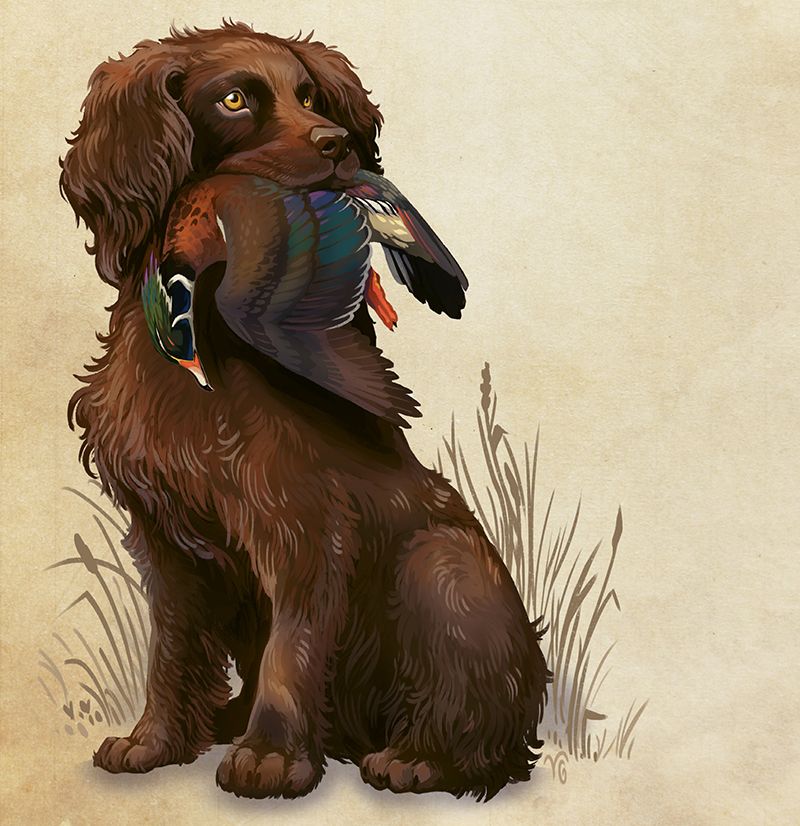The brown, floppy-eared pooch known as the “Boykin spaniel” today seems omnipresent in the Holy City—especially during February’s Southeastern Wildlife Expo. But in actuality, the breed only came onto the scene a century ago, born of one Camden-area man’s desire to create the perfect pup for hunting wild turkeys in the Upstate’s Wateree River Swamp. Here, learn more about the animal who has been the South Carolina State Dog since 1985

THE STORY BEGINS begins In the early 1900s, a homeless, spaniel-type dog reportedly befriended Alexander White of Spartanburg. Taking him in, White noticed that the newly dubbed “Dumpy” had a talent for retrieving, so he sent him to his hunting partner, Whittaker “Whit” Boykin, who lived near Camden, South Carolina.
GOOD THINGS IN SMALL PACKAGES Because Mr. Boykin wanted a hunting companion that traveled easily in canoes and other small crafts, he bred his spaniel to be compact and lightweight. It’s said that this spaniel—who stands between 14 and 18 inches high and weighs 25 to 40 pounds—“doesn’t rock the boat.”
SPORTSMAN'S BEST FRIEND Mr. Boykin trained Dumpy into a top-notch turkey dog and waterfowl retriever. Then he began breeding him with other canines known for their hunting instincts, such as the Chesapeake Bay retriever, springer spaniel, cocker spaniel, and American water spaniel, eventually creating a breed known as the “Boykin” that’s been recognized by the American Kennel Club since 2009.
THIS DOG CAN HUNT Versatility is the Boykin’s hallmark. The eager-to-please pups are easily trained and take readily to the field as upland game dogs used for turkey hunting and flushing doves. With webbed feet and water-resistant coats, these strong swimmers are also excellent retrievers for ducks and other waterfowl.
SMALL, DARK, & HANDSOME The Boykin spaniel’s solid brown coat can range from flat to slightly wavy and from rich liver in color to dark chocolate. Light fringe, or feathering, may be found around the ears, chest, legs, and belly. These characteristics call for weekly grooming, making for excellent bonding time between dog and owner.
NO BARKING ZONE Boykins are said to only “bark when necessary.” This, coupled with a lovable, easy-going personality and a life expectancy of 10 to 15 years, creates an excellent family pet. Thriving on human companionship, these dogs need to live in the house.